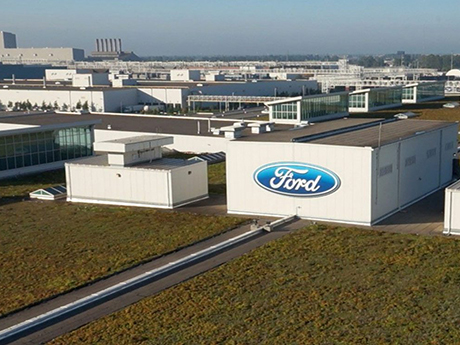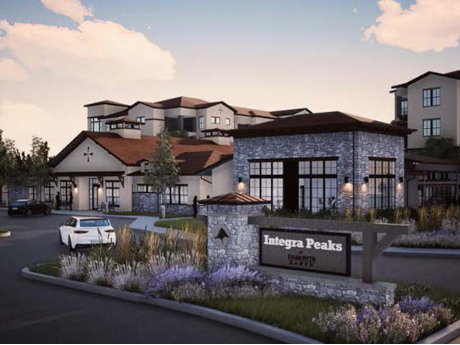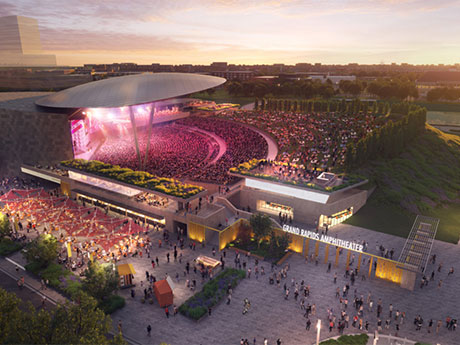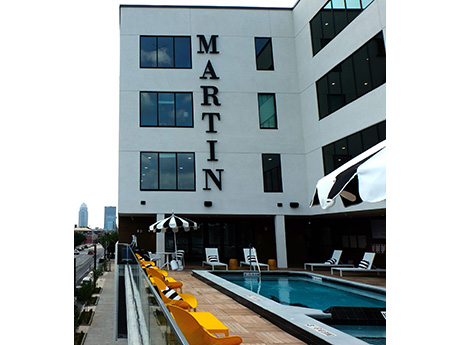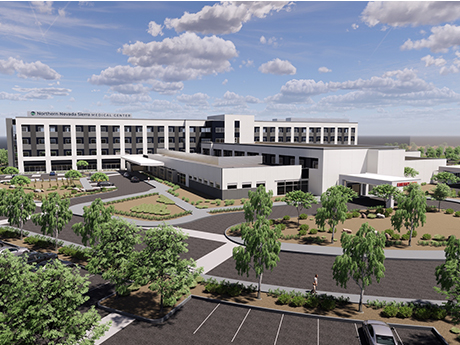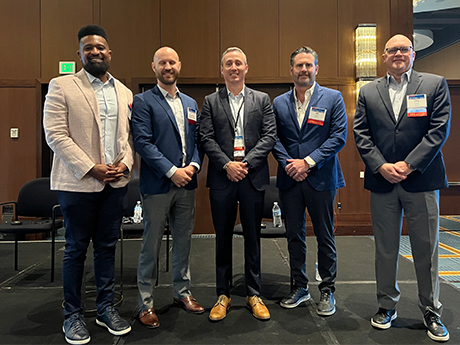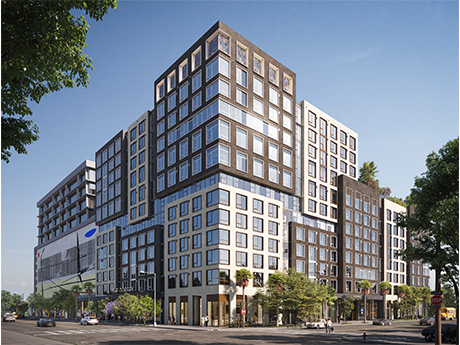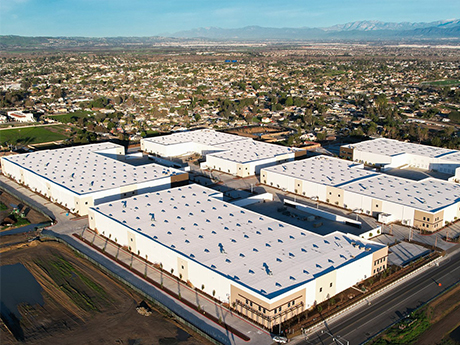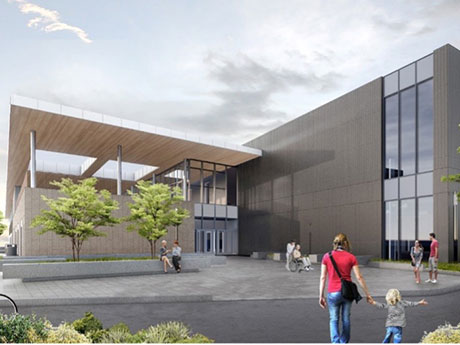With strong industrial leasing activity and significant development over recent years and currently, notably in the electric vehicle (EV) market, Louisville’s industrial real estate market maintains a steady drumbeat and forecasts continued success. The Louisville industrial market’s strong start to the year continued in the second quarter, and the JLL Q2 Industrial Insights report shows that Louisville remains a robust market. Over the past five years, developers constructed over 25 million square feet of Class A industrial space, positively absorbed 27 million square feet and has grown Louisville to a 90 million-square-foot Class A industrial market. Another positive market indicator is rental rates have appreciated 40 percent over the last three years, with the direct average asking rate currently at $5.67 per square foot. We expect this to continue to rise slowly over the next 18 months due to leasing activity, low inventory and a slowdown in speculative development. Louisville is quickly integrating and expanding capacity for EV production, following a growing EV industrial trend across the United States. We expect the EV market to continue expanding, especially with Ford Motor’s commitment to the region and generating an EV presence at the Blue Oval City SK facility. A joint venture …
Market Reports
— By Aiman Noursoultanova, Senior Vice President, CBRE’s Reno Investment Properties Group — Reno’s multifamily sector has performed exceptionally well over the past decade due, in part, to strong, sustained job growth. Nevada continues to lead the nation in employment growth at 3.8 percent over the past year, according to July data from the Bureau of Labor Statistics. While Reno’s job growth over the past decade has focused more on diversification, recent growth can best be characterized by higher-wage industries like healthcare, technology, manufacturing and aerospace/aviation. As a result, the market has seen an influx of new Class A, well-amenitized construction that appeals to this new tenant demographic. Notable company relocations and expansions thus far in 2023 include OMEC Medical, a life sciences instrument manufacturer; Edgecore, a wholesale data center developer, owner and operator; Generac, a leading global designer, manufacturer and provider of energy technology solutions; and Stellar Aviation, a fixed-base private airplane operator catering to private planes and jets. Companies investing in Reno most commonly appreciate the region’s attractive regulatory environment, low cost of doing business, access to regional transportation corridors and a high quality of life for its employees. Regarding rent growth over the past decade, several submarkets have performed …
By Drew Miller, CBRE Despite some level of macroeconomic uncertainty, the fundamentals of the industrial real estate market in West Michigan remain solid. While the overall number of tenants in the market has recently declined slightly, the demand for space from local companies and tenants new to the market is still outpacing supply. Nationally, the overall industrial vacancy rate finished the second quarter of 2023 at 3.7 percent, 30 basis points higher than the previous quarter but 100 basis points lower than the 10-year average. Comparatively, the West Michigan industrial market, of approximately 170 million square feet, ended the second quarter with an availability rate of less than 3 percent. The combination of a diverse economy, robust infrastructure and a conservative approach to development all factor into the continued strength of the region. Grand Rapids, the second-largest city in Michigan, and West Michigan at large are blessed with a well-balanced and diverse economy led by office furniture, automotive suppliers, aerospace, food processing, e-commerce and advanced manufacturing companies. The area is home to many of the leading office furniture and related design companies, including MillerKnoll, Haworth and Steelcase, all headquartered in West Michigan, with many of their manufacturing and suppliers …
By Scott Nurski and Kevin O’Reilly, NAI Wisinski Great Lakes The Grand Rapids multifamily investment sales market has experienced reduced volume year-to-date, but the fundamentals remain strong. West Michigan, especially Grand Rapids, is affordable, with abundant high-paying employment opportunities and a high quality of life. In the words of author Malcolm Gladwell, “I love Grand Rapids. Why doesn’t everyone live in Grand Rapids?” Unlike many major markets, the construction pipeline here is slow and steady, with little risk of oversupply. While multifamily sales volume is down across the board, Grand Rapids remains a desirable location for owners and operators alike. Multifamily fundamentals Annualized rent growth continues to normalize from the wild parabolic rise seen nationwide due to the pandemic and associated market disruptions. It currently stands at 5.1 percent, according to third-quarter data from CoStar for Kent County (30 units and above). This figure is a solid uptick from the second-quarter 2023 figure of 3.2 percent. The market generally is returning to the 3 to 5 percent range typically seen during pre-pandemic norms. Occupancy improved slightly from 95.2 percent in the second quarter of 2023 to 95.4 percent in the third quarter of 2023. However, it has been gradually declining …
Louisville, perhaps the center of the universe for horses and bourbon, is a somewhat undiscovered gem lying at the northern edge of the Southeast. The metro, with a population of just under 1.4 million people, is a steady performer across virtually all measurables, producing consistent and predictable metrics that may not dazzle Wall Street but certainly have not disappointed the base of capital invested in this riverfront market. The Kentucky Derby, which ran for the 149th time this past May, produces $400 million in economic development annually and is likely the first mental image conjured up when the term “Louisville” is mentioned. Kentucky bourbon likely comes to mind next as a $9 billion industry across the state, with roots as deep as oak. However, there’s much more to the Louisville metro. Through the first half of 2023, the Louisville metro area had recovered virtually all of the more than 55,000 jobs the market lost in 2020. Interestingly but not surprisingly, arts, entertainment and recreation posted a net 7.5 percent increase in jobs from 2020 through 2022, more than erasing a blistering 2020 loss of 25.4 percent of the jobs in this sector. Less glamorous but perhaps more critical is transportation …
— By Daniel A. Kapic, Vice President, Regional Manager, Marcus & Millichap — Reno continues to be one of the nation’s fastest-growing smaller markets, underpinning tenant demand in the office sector. While remote and hybrid work have impacted office use in the metro, market-wide vacancies have kept in decent shape. Entering July 2023, Reno’s 15.1 percent vacancy rate was below the pre-2017 average. Rapid household growth has backstopped space needs, with law, financial and health service providers executing expansions to capture share in a growing market. The local household count increased 2.2 percent year over year in September, which was the second fastest among metros with fewer than 600,000 households. South Reno is spearheading this growth with 14 consecutive quarters of positive apartment net absorption through June 2023, drawing consumer-facing office tenants to the highly developed Meadowood neighborhood. The Reno VA Medical Center — which serves patients as far as Alturas, Calif. — recently announced its relocation to the area, which should also elevate long-term needs for nearby medical office space. While household growth has shored up space demand, Reno’s office market is still recalibrating to a 20-year-high supply injection. Overall inventory expanded 2 percent in the first half of …
By Taylor Williams DALLAS — Just 18 months ago, multifamily lenders and investors in major Texas markets were underwriting record-high levels of rent growth to accompany historically low cap rates, giving capital sources little hesitation to lend at negative leverage. Following a spate of nearly a dozen interest rate hikes, the opposite is now mostly true. Negative leverage occurs when a buyer’s going-in capitalization rate is lower than the all-in interest rate on the debt attached to the property. The scenario tends to manifest when a property with an encumbered cash flow is purchased in a high- or rising-interest-rate environment. As a rule of thumb, net operating income should comfortably cover debt service, or at least clearly be moving in that direction at the time of acquisition. When times are good — meaning prices are high for sellers and money is cheap to borrow for buyers — negative leverage can present a flexible and creative way of getting deals across the finish line. Lenders and equity partners may be willing to accept negative leverage in the short run because they are confident that rents/cash flows will soon increase, or that interest rates will remain low, or both. But the ability to …
While many cities grapple with a declining population, softening rents and a struggling office market, Miami is riding a wave of population growth and apartment demand. This stems from the usual factors — sun, lifestyle and low taxes — as well as something unprecedented: an influx of large office users. New-to-market office tenants are transforming Miami’s economy and helping offset the challenges of inflation and rising interest rates. Miami multifamily fundamentals remain strong, with plenty of liquidity in the market. Our economy is more diversified than ever, and this has made it one of the most desirable markets in the country. Supply and demand People and businesses fleeing states with higher taxes and longer pandemic restrictions helped fuel Miami’s population surge between 2020 and 2022 and led to record-breaking rent growth during that period. Miami has become a magnet for large financial and tech firms, with well-heeled companies like Starwood Property Trust, Citadel Securities, BlockChain and Blackstone Group taking new office space. All told, a record 57 companies relocated or expanded to Miami-Dade County last year. Between May 2022 and May 2023, Miami added over 83,000 jobs, more than a 4 percent increase. Miami’s unemployment rate as of May 2023 …
— By Nellie Day — Jon Pharris, co-founder and president of Newport Beach, Calif.-based CapRock Partners, is in delivery mode. The firm recently debuted Palomino Ranch Business Park and Saddle Ranch South, two new LEED Silver-certified industrial building complexes in Norco, Calif. Palomino Ranch is a three-phased, 2-million-square-foot industrial development, while Saddle Ranch South is a 374,000-square-foot three-building industrial park. Next up is Central Point III, a component of CapRock’s 5-million-square-foot, master-planned Central Point industrial development in Visalia. WREB recently sat down with Pharris to discuss these new projects, the types of tenants/users CapRock is now targeting and why location is more important than ever. WREB: Why was Norco the right choice for both the Saddle Ranch South and Palomino Ranch developments? Pharris: Norco is an important location for logistics and distribution due to its position near the convergence of Riverside, San Bernardino and Orange counties, in addition to its seamless transportation connectivity, robust infrastructure, proximity to major ports and airports, favorable business environment and skilled workforce. These factors collectivelycontribute to the city’s efficiency, cost-effectiveness, and competitiveness for facility operations, attracting businesses seeking to optimize their supply chains and expand their market reach. Norco is highly desired by Orange County, …
By Jim Pitoukkas, Coldwell Banker Commercial Shook Outside of recognition related to Purdue University, the Greater Lafayette region (consisting of West Lafayette, Lafayette and surrounding towns in Tippecanoe County), has been in the shadows of the Indianapolis MSA to the south and Chicago MSA to the north. This is changing, though. Growth over the last decade has pushed Greater Lafayette into the national spotlight as an emerging hub for innovation in advanced manufacturing in industries including medical, aerospace and defense, agriculture and nanotechnology, and a burgeoning housing market. For three quarters straight, The Wall Street Journal and Realtor.com have ranked Greater Lafayette the No. 1 Emerging Housing Market in America based on comparatively affordable housing, a skilled technology-based workforce, and a strong growing local economy. Additionally, current and to-be residents benefit from consistent public investments in quality-of-life infrastructure that continue to attract new residents across a range of ages and backgrounds. Quality of life Greater Lafayette has invested in excess of $889 million in public investment since 2015. These investments have ranged from new utility infrastructure, a new minor league ball field, parks, county-wide trails, public facilities like the West Lafayette Wellness Center and the Lafayette Public Safety Center, and …


